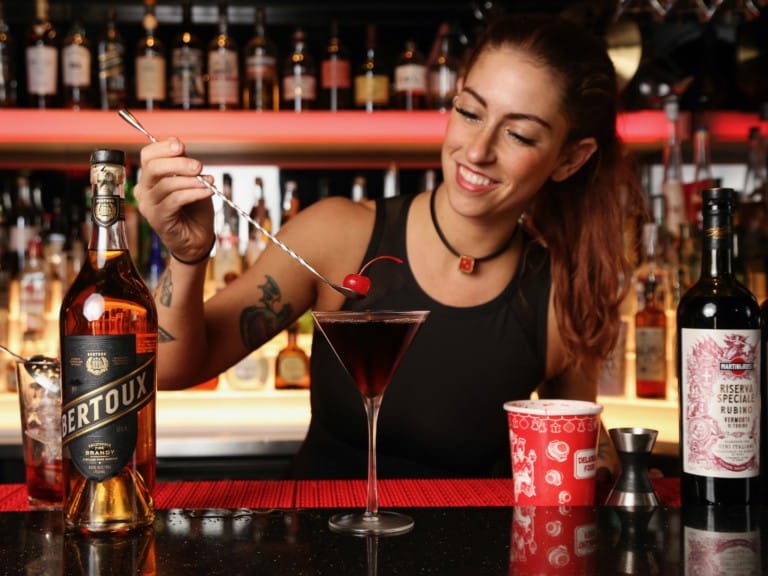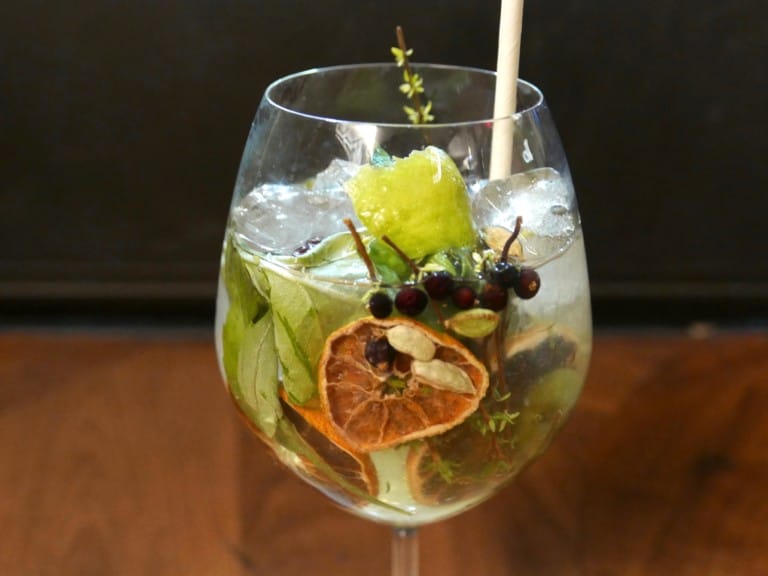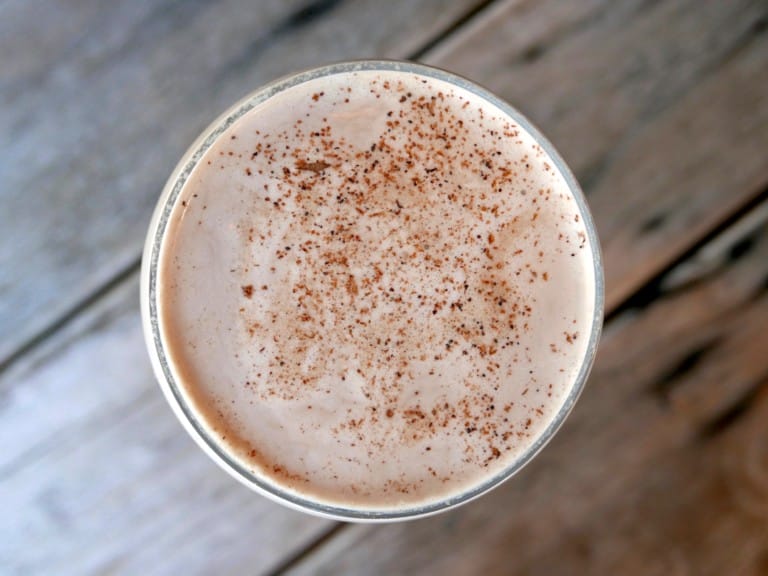INTERVIEW CONTINUED FROM PREVIOUS PAGE
In terms of the New York cocktail scene, do you feel like it’s saturated, or is there still room for growth? And if so, what sort of growth do you expect?
Well, you know, think about it. Bars started opening in New York in the 1830s, and bars still open, several a week. There are thousands of them. I don’t think we’re in any danger of New York running out of bars. The bars in New York are like the redwoods in California. They’re not going anywhere. They are what makes us famous. All kinds of different ones open. Neighborhood ones open. Fancy ones open. Speakeasy ones open. Restaurant bars open. There’s all kinds of stuff going on. Hotel bars. It’s an endless parade. Five close, 10 open.
How do you feel about comparing the cocktail scenes in different cities?
Well, it’s growing in some cities. Let’s put it this way. We are a cocktail country. It is our heritage. It is our culture, it is our cocktail culture, so every little whistle stop town in America has a bar with a neon martini sign in the window – or it did once, before people started collecting neon – and you’ll get a good Manhattan or martini. That’s just the way we are. That’s what our country’s all about. They have pubs in Ireland, Scotland and England, and we have bars, though the younger people in Ireland, Scotland and England are starting to gravitate towards our style of bars, and less and less towards pubs. In fact, this craft bartending thing, you’re seeing them pop up in cities all over the country now, two or three here or there. The internet’s really responsible for that. Now there’s no lack of information available to whomever would like to do this. There’s tons and tons and tons – in some cases even accurate information – available for the taking, if you’re so inclined.
What have your impressions of the Los Angeles cocktail scene been on your most recent trip?
Los Angeles has seen a definite revival. Los Angeles was a very classy bar town in the ’50s. It really, really was. Liquor companies wanted to market their spirits using Hollywood movie stars. The finest of the finest was always available because there’s lot of money here. The problem was, it was available on the very high end for lots of money, although I’m sure there were plenty of dive bars around. In Los Angeles, you were never in danger of not getting a good drink, but for the average joe, probably it was out of his price range in the ’30s, ’40s, ’50s and ’60s. What’s happened now, we’re starting to see bars open that are a little bit more accessible, maybe, although people are willing to pay a substantial amount of money to be at these places, these days, in terms of drink prices. As we all know, drink places have gotten pretty high, in some places. Some guys have figured out how to keep them pretty low and still do stylish things. Julie Reiner’s good at that. It depends on your mood.
You’d been a part of an Absolut Sensory Analysis Workshop?
I wasn’t a part of it. I did it in New York. I attended.
I went the other day in Los Angeles. As far as applying molecular techniques to cocktails…
It’s great. It’s absolutely theatrical and fun. Theatricality is a wonderful thing. There were bartenders in the 19th Century who were magicians. That was sort of the flair of the 19th Century, lots of magicians, lots of magic tricks, lots of crazy stuff. Jerry Thomas had two white rats who ran around his shoulders while he was behind the bar. Why not? People have lots of different ways of attracting and keeping people coming. I did the flaming orange peels at the Rainbow Room, and people loved it and talked about it and brought people up to see it.
If a cocktail comes in powder form, is it still a cocktail?
Well, you know, the theatricality of it in certain manifestations is certainly not going to be taking the business over, but they are fun to see and fun to experience. I don’t think the classic dry gin martini is in any danger of turning into a powdered drink in the next decade, if that’s what you’re asking.
Only because one of the drinks the other day was a powdered gin and tonic.
That’s just a fun thing do to.
Would you be interested in opening another bar?
Actually, I’m not particularly interested in opening a spot. I consult on openings. My son, who’s in the business, might open something, and if he does, I’ll help him. I’ll probably end up working there a night or two if he does in New York, anywhere near me, but no, I’m 62 years old and I don’t want to get into having children again. That’s a seven day a week, 365 day a year job. I’ve done that, and I’m not interested in doing it again right now. I have other things that are more compelling, like living.
So clearly a lot of people have learned from you with the B.A.R. program. What do you feel like you’ve learned from being involved with that?
Besides the obvious answer to that question, that everyone brings to us factoids and things that we all don’t know, and that’s nice. You learn when you’re around smart people, especially my partners. I count them as the smartest people I know, but even our students who are learning, as we talk to them and spend time with them and see what they’re doing, we’re learning from them, seeing unusual ways they design their bars, the drinks they’re making, which are fascinating. I’m not above stealing ideas wherever I see them. We all borrow from one another. It’s just the nature of the business. That’s one of the major reasons that I do it, because it keeps me alive and on my toes, and also, it’s an opportunity to provide an education in an area where there hasn’t really been any serious education for decades. You know why? It was originally intended and designed to be a master apprentice profession, the way carpentry is, or the way electrician or plumber. It was meant to be a skill or craft that was taught by a mentor to a student. Unfortunately, any of the masters that were still around, whenever, just kind of gave up all the profession, with all the shortcuts of the owners and the technology of the business, started incorporating into the job. The final analysis is that the fancier, more interesting drinks that were driven by fresh ingredients diminished to the point that the freshest thing you could get was a screwdriver. Even that was probably cartoned orange juice, or maybe out of the gun, so now that the culinary revolution has reintroduced real ingredients and created a huge audience for authenticity and real flavor and big flavor and variety, the bar business is in real danger of coming back in a real crafty and similar way to what happened to the culinary industry, which is great.
What’s a great simple cocktail for people to make at home, and what would the recipe be?
A gin martini, a margarita, where do you want to go? You want a classic or you want an original?
How about an original?
Take a shot of gin, four strawberries, mix a little honey with a little agave nectar, fresh lemon juice, mash the strawberries up in the bottom with a little honey and agave nectar, pour in the lemon juice, pour in the gin, shake it up really good and double strain it into a cocktail glass. I called it the Nirvana.
How much of each ingredient do you use?
The formula I usually use is ¾ ounce of the sour ingredient, ¾ ounce of the sweet ingredient. Obviously that works for certain sweeteners and not others, but it should work fine – honey cannot be used straight, so you have to put a little water in it – so I make a little syrup with two parts honey and one part water, and I’ll generally do the same thing with the agave nectar, since it’s so sweet. Two parts agave nectar, and one part water, and mix those up in whatever proportion you like. If you want more of a honey taste, you put more honey, if you want less of a honey taste, you put more agave nectar. So ¾ ounce of the double syrup, ¾ ounce of the lemon juice, an ounce and a half of the gin and about four strawberries, and you’ll have a really nice drink I call the Nirvana. Strain out the pits so they don’t get caught in your teeth, double strain it, shake it really hard with ice and maybe put half a strawberry that’s shaped like a heart on the rim of the glass, based on the customer. It’s a nice drink.
You said it was gin based?
You can make it with vodka. You can make it with gin. You can make it with tequila. You can make it with rum. It pretty much works with any white spirit, but I like it with gin, and when I originally made it with gin, I called it the Nirvana. I had different names for different spirits.
Any particular gin that you enjoy using?
One that doesn’t bang you over the head with Christmas tree spices, so maybe not one of the classic London drys, but maybe something like Plymouth or Tanqueray 10, because it’s fruity, more citrusy. Even Hendrick’s, because of the floral notes. So more of a newer style.
If you could only drink one more cocktail for the rest of your days…









Blog Comments
mattatouille
December 23, 2010 at 4:47 PM
Best bartender interview EVER. I love DeGroff’s The Essential Cocktail – a must read for any cocktailian. By the way, you spelled Polo Lounge, Polio Lounge. Big difference 🙂
Joshua Lurie
December 24, 2010 at 11:30 AM
Mattatouille,
Glad you liked my interview with Dale. Thanks. He certainly has the historical perspective and plenty of insight. I’m pretty sure he meant to say Polio Lounge, which is apparently a longtime nickname for the establishment.
Tweets that mention Food GPS » Q&A with Dale DeGroff, King Cocktail -- Topsy.com
December 23, 2010 at 4:05 PM
[…] This post was mentioned on Twitter by foodgps, Caterham Business. Caterham Business said: Q&A with Dale DeGroff, King Cocktail http://bit.ly/eHz2co […]